There have been times in this journey when it was wise to schedule slave dwelling stays back to back. My trips to Alabama, Missouri, and Texas are perfect examples of that. There has been one trip in South Carolina where that also applied; that was my stays at Laurelwood Plantation in Eastover, SC and the slave dwelling in Cheraw, SC. The stays at Siebels House Kitchen Dependency on Thursday, April 5 and the Lexington County Museum on Friday, April 6 would follow that same formula.
Outreach Discussions Renewed
Before I could participate in the events planned for the Seibels House Kitchen Dependency on the evening of Thursday, April 5, 2012, I had to take an interesting detour to Florence, SC earlier that morning. Because of the recommendation of a highly respected historian and friend, the TV show History Detectives contacted me about filming a scene for them describing the life of a female slave. My immediate response was yes but then they told me the location. It turned out to be the Hewn–Timber Cabins at Francis Marion University one of the two places that have denied me the opportunity for an overnight stay in its slave dwelling. After making this clear to the History Detective representative, we both concluded that I was still their man.
Upon arrival at the site in Florence, I discovered that the film crew was going to be late. The tardiness of the film crew provided a great opportunity for the property manager/interpreter to justifiably challenge my intent. After convincing him that I came in peace and meant him no harm, we got along admirably from that point forward. The filming of the scene went extremely well but I’ve been on sets enough to know that two hours of filming could mean zero to five or so minutes in the finished product. The piece is scheduled to air sometime this summer. The chance for a future overnight stay at this site looks promising.
A Sad Commentary
Operating on assumptions and not letting my host know exactly what time I would arrive, it was 4:00 pm when I reached the Seibels House Kitchen Dependency. The property appeared to be locked so from a distance I took pictures of the mansion and the kitchen dependency where I was to spend the night. I then went seeking a place to do some shopping for some snacks for the night stay.
While shopping, I got a call from Ruth Rambo who was scheduled to share the slave dwelling experience with me. Ruth told me that she was in the garden area of the house which came as surprise to me because I did not know that one could have unescorted access to the grounds of the mansion. I relayed to Ruth that once I finished my shopping, I would be there to meet her.
When I met her at the site, I told her about my hesitancy about entering the garden. When I stayed at Cliveden in Philadelphia an alarm sounded on the morning when I got up and made an attempt to go the bathroom. Through a phone conversation, the director of Civeden gave me a code to put into the system which did not work. He stated not to worry because he would call the alarm company to alert them to what was happening. My immediate thoughts went to the Rodney King incident so I stated to him that I would just sit there until he or another staff member got there to take charge of the situation. It was that thought and the current Trayvon Martin incident that convinced me to take all of my photographs of the site from a safe distance. A sad commentary, but true in my mind.
Seibels House
According to a promotional brochure, “Purportedly the oldest remaining building in Columbia, a portion of the Seibels House is believed to date to 1796. To the north of the building , attached by a covered breezeway, stands a circa-1830 kitchen house, believed to be the last building of its kind left in Columbia and one of only a very few structures in which enslaved African Americans lived and worked, separate from their owner’s residence. Various owners adapted the house to meet their needs, especially the Seibels family, who acquired the property in 1858. The building’s Colonial Revival style dates to a 1920s renovation designed by architect J Carroll Johnson. Historic Columbia Foundation received the property as a gift in 1988 and uses the building for its administrative headquarters and as rental property.”
The Lecture
Prior to the stay, a Slave Dwelling Project Lecture was scheduled. Two organizations that represented the media were there, which was a great testament because I know at some point in the future of this project, it will not excite the media as it is currently doing, but that will not make this project any less important. At the end of the lecture, I yielded two minutes to Ruth Rambo who would reveal her reason for spending the night. It was then that Ruth revealed that she was a descendant of a slave and slave owner which was news to me and did not go unnoticed because of the work that I am currently doing with the group Coming to the Table.
I also yielded 5 minutes to Robin Foster who is a genealogist and one of the publishers of my blog. I met Robin two years ago when the two of us sat on a panel together at Penn Center on St. Helena Island. The Slave Dwelling Project focuses on the places but it is Robin and others like her who constantly reminds me that it is the formerly enslaved people who are important. The turnout was great and diverse and lots of questions were asked during the question and answer period. I was most impressed that a child got the first and last question for the night.
After the lecture, I got to mingle with some of the audience while some of the others went for a tour of the kitchen dependency. When I finally, made my way to the kitchen dependency and the media left, one of the staff members alerted me that I had promised one of the audience members that she could spend the night with us, an error that had to be immediately corrected.
The Stay
In addition to me spending the night, Old Reliable, Terry James, Ruth Rambo and John Scherer, staff member of Historic Columbia Foundation would also share the experience. It was on a trip last year that John and I took to Richmond, VA to participate in the annual conference of the American Association of State and Local History (AASLH) that we devised the plan for what was happening that night. I recall meeting Ruth Rambo at a group meeting that I organized to see the movie Tuskegee Airmen. Ruth reminded me that I met her earlier at an event when I was representing my Civil War reenacting group, Company I, 54th Reenactment Regiment, but how can one forget a name like Ruth Rambo. The opportunity to share the slave dwelling experience is an open invitation pending the permission of the property owner. Ruth did all that was necessary to ensure that her spot was secured.
The conversation among the four of us was very rich. Before we fell asleep and after we woke up, we covered everything from the burning of Columbia during the Civil War; the great migration; the detail of the kitchen dependency; brick making, who snored the loudest; segregation, and lynchings . Ruth, Terry and John left while I utilized a computer in the office to do some quality writing for the project.
The Lexington Museum
The Lexington Museum came at this thing from a completely different angle. Most of the buildings including the two slave cabins were moved to the site from other locations. That would make this stay similar to the ones at Old Alabama Town in Montgomery, AL; Roper Mountain in Greenville, SC; and the Price House in Woodruff, SC. Unlike the previous night at the Seibels House Kitchen Dependency, this stay garnered very little fanfare, similar to previous stays at privately owned properties. When I toured the grounds with the site director and saw the slave cabins, I verified that I had been there previously performing living history in the capacity of a Civil War reenactor. The cabin was once used as an office so it had electricity but no lights, central heating and air and replicas of artifacts throughout.
“Deformed and Almost Worthless”
One impressive part of the building was one interpretive sign that listed the first names of the slaves who were once the property of the owner. The most haunting was one interpretive sign that listed the name of one female slave and categorized her as deformed and almost worthless.
I had a conversation with the gentleman that restored the cabin that I was going to sleep in that night. He expressed his fear of ghosts but that did not deter me. I was delivered a bonus when the site director introduced me to a museum neighbor who told me about a plantation that he owns in Fairfield County, SC that has a restored slave cabin. Long story short, Lemmon Hill Plantation in Winnsboro, SC will be on the 2013 calendar of the Slave Dwelling Project. A local newspaper reporter showed up for an interview and was not impressed by my Yankee hat that went with my Yankee uniform. William Tecumseh Sherman’s troops made an impact in this area during the Civil War.
During dinner at a local Bojangles’ that was located in walking distance from the museum, Old Reliable Terry James called to let me know that he would be there later that night. As darkness descended and a full moon revealed itself, I had quality time inside the cabin alone with my thoughts to do some quality writing about the project. I now realize that based on some of the inquiries that I have gotten thus far there is great potential for the expansion of the Slave Dwelling project in 2013. Ten thirty came and Terry James had not yet shown. Thoughts of the early days of the project and how I would sleep in the dwellings alone danced through my mind. I thought of that reporter who did not like my Yankee hat and the gentleman who restored the cabin when thirty minutes after I laid down, Terry rang my phone stating he was outside. After getting Terry settled into the cabin, there would be very little conversation, his history lesson would have to wait until the next morning.
The next morning Terry took full advantage of his skill as a professional photographer. According to its brochure, “The Lexington County Museum, founded in 1970, offers a rare and unforgettable experience – the chance to see and touch a way of life gone forever. Structure and furnishings focus on the early history of Lexington County and interpret the everyday lives of its residents from ca. 1770 until the momentous changes wrought by the Civil War. The Museum complex, located right off Highway 378, encompasses seven acres of property and features 36 historic buildings.” Terry was like a kid in a candy store taking intricate shots of each building. We both wagered that each of those buildings that were built prior to the Civil War was built using some type of slave labor. And then we parted, I headed home to my family, with Terry still taking pictures of buildings.
Commentary: Ruth Rambo
— April 5, 2012, Seibels House (Kitchen), 1601 Richland Street, Columbia, S C
It’s 11:30 AM the next morning: grey, dank, and dreary. Yet my insides defy the environment; they refuse to reflect the mood of the weather, my insides are flying high. Even my body is behaving jubilantly. These old bones are not predicting rain although a thin layer of heavenly spit sits on my hair. My back shows no evidence of its night long encounter with a bare wooden floor as I had anticipated. The hard pine Cracker Barrel chair feels remarkably comfortable. I surely would have predicted otherwise. No chair no matter the level of padding would have been comfortable for the next few days or so I had forecasted. As instructed by Zora Neale Hurston’s Mom, I have ‘jumped at the sun.’ Didn’t ‘get there but at least I got off the ground.’
I am driving home to Charleston after a sleep-in at the partially restored brick kitchen on the Seibels House, an urban plantation in Columbia S C. It is just one stop on Joe McGill’s National Trust for Historic Preservation Slave Dwelling Project. He is the project creator/coordinator and has slept in slave dwellings around the country on plantations from Texas to Connecticut. Terry James, photographer and civil war reenactor has accompanied Joe, also a reenactor as well as a Field Officer for the Trust, frequently on this mission to highlight the need for preservation of all the antebellum South relics. The party of four of slave dwellers also included John Scherrer, Director of Cultural Resources, Historic Columbia Foundation and me, an African American history dilettante with a lifetime interest in the American system of slavery.
Joe and Terry were already friends and enjoyed a close camaraderie. Both John and I had met Joe but didn’t have any common experience with him and didn’t know Terry at all. Thrown together in a very small space shifting positions or turning over had to be carefully choreographed. John observed that during Middle Passage the spaces were much tighter so movement was virtually impossible. My thoughts traveled from the slaves’ movement restrictions of a narrow space coupled with the inability to restrict normal bodily functions with resulting products. We had access to modern facilities for which I was most grateful. Terry had shackled his hands so when he turned over we heard the clanging of those chains in the night. It was a frightening and sobering reminder of physical and psychological elements of antebellum controls. On the lighter side when we awoke, John our host asked if we wanted coffee. The idea was heartily welcomed. So he left the historic kitchen and returned from the ‘Big House’ carrying a tray of juice, coffee and banana bread. We laughed at the role reversal. A possible descendant of slave owners serving the descendants of
slaves.
Joe extends an open invitation to people interested in the topic of slavery to join him by sharing the lodging of a slave cabin overnight. The restoration of the fine plantation homes is a no brainer. Everyone both black and white; from the north and south wants to vicariously experience – if just for fifteen minutes- the life style and luxuries of a southern planter. Yet no one wants to explicitly experience the life style of an enslaved African. Well! Almost nobody.
Last night Joe had three takers: Terry James, John Scherrer, and me, the paternal great granddaughter of Lydia Rambo. Lydia was a slave born c. 1820 who married and was freed by her owner Lt. Gayle Rambo and has frequently informed and guided my life. She has been my personal symbol of strength and endurance. Throughout my life whenever I was feeling mentally defeated or physically ill, I’d conjure up a scenario where my great grandmother Lydia was similarly compelled to push herself to meet exceedingly high expectations…physical goals clearly more difficult to meet than the ones confronting me during my 20th-21st Century life. Just thinking of this slave woman’s survival achievement, has often given me the resolve to push through extreme fear and pain and ‘just do it’. The will to survive is strong. Although I never met her, my G grandmother taught me that.
Of course one cold night, no matter how uncomfortable, in a brick plantation kitchen/slave dwelling does not a slave experience replicate. What it did do is give me time and place and circumstance to think about the real life of a slave. It stimulated me to devote serious thought to America’s gritty public secret – an inhuman, inhumane system of trading in human flesh- slavery.
Cousin
by Ruth Rambo
And then those men with manes covering their chins
Those men without blood
in too many cloths
Those men making ugly sounds
dancing only with their hands and arms
Came
bringing shining plates where our faces appeared
Bringing bowls of beads that catch the light
and then throw it away
Those silly men traded all those new things for cousin
Those silly men without blood.
Cousin wasn’t Mandinga anyway.
— Ruth Rambo
The questions flow…the questions with immediate and obvious answers and the numberless questions without probable answers.
The first is the most apparent to me: What would America be like today culturally, politically and economically had there been no talented, creative, abundant African slave labor? What unrecognized role did slavery play in the supremacy of America on the world stage? Who first envisioned slavery as the cost effective method of developing America’s north and south east corridor? Of working the land, of building the dwellings, of expanding the music, of raising the children?
Who were these slaves rendered 3/5th a person? Who were these slaves, the only major group of North American émigrés who did not willingly and purposefully seek the opportunities available on these shores? Yes! The Africans too were huddled masses yearning to breathe free. They were also the wretched refuse of a teeming shore. The Africans were homeless and tempest-tost. Yet here was no welcome for them….no lifted lamp….no open nor golden door.
Who were these enslaved Africans who endured a brutal lifestyle of work from ‘kin to kant’ (can see in the morning to can’t see at night) without becoming chronically depressed? How did any one of them escape becoming suicidal? Who were these slaves enduring lifetimes of hardship and deprivation yet had families, created communities, learned to talk through many languages, danced, laughed and sang. Who were these Africans who taught their children the many skills they had mastered – the most vital of all – how to survive and then manipulate the system without being beaten to death? Who were these slaves?
Who would I be, had I been a slave? Would I have been cheerful and chatty? What skills would I have developed? Would I have run away? Would I have tried to harm my owners? Who would I have been? And who am I now because my G G M, Lydia was chattel.
And why, over 300 years later, does America continue to deny their contribution and the contributions of their descendants?
Some of these questions might be answerable: others require a Sphinx. What is crystal clear is that this remarkable slave dwelling experience was intellectually provocative and stimulating. You should think about becoming a slave dweller.
Contact Joe McGill. You’ll become the better for it. I believe I did.
— Ruth ‘Retired’ Rambo
Had I Known
by Ruth Rambo
You left after breakfast at day break
like always
Your skin a smooth butterscotch satin
like always
Your elaborate woven corn rows neatly arranged
like always
You carried the water jug your mother made
Like always
I only glanced at your back for one moment as you departed.
The rhythmic swaying of your bottom enticing
like always
Had I known you would not return
like always
Had I known your body would never again fit into the spoon of mine
Like always. Had I known.
Had I known I would spend my remaining years
Looking, yearning, hoping, begging, dreaming, praying, working, searching
Had I like always would become
never again
Had I known.
If only I had known.
— Ruth Rambo
Commentary: John Sherrer, Historic Columbia Association
On Thursday, April 5, 2012, history was made within the confines of a circa-1830 brick kitchen house, adjacent to one of Columbia, South Carolina’s most celebrated sites –the circa-1796 Seibels House, a landmark structure most often associated with distinguished architecture and verdant gardens. A cast of four, led by Joseph McGill, a field officer with the National Trust for Historic Preservation and a Civil War 54th Regiment re-enactor, crafted an unprecedented Historic Columbia Foundation experienced by virtue of their respect for the power of preservation. As part of Mr. McGill’s on-going effort to heighten public appreciation of and preservation advocacy for sites associated with slavery, this experience was the 31st in his thus-far two-year endeavor. But, for all four of us it was our first shared encounter and one that profoundly affected me as a steward of this extraordinary structure.

Terry James, Ruth Rambo and John Scherrer at Seibels House
Upon first inspection we all looked different – three men, one woman; three South Carolinians, one Ohioan; three black and one white. We shared space recently afforded by the installation of a partial floor within the building’s north chamber, a room determined by archaeology and corroborated through oral history, to have served as a laundry for the main house. Just to our south lay the uncovered floor of the south chamber, a room that during slavery and for generations after was busied by the efforts of cooks preparing meals of great variety. Overhead, bear rafters loomed where formerly a plastered and whitewashed ceiling shielded occupants of both rooms.
Following an evening program in which Mr. McGill shared his first thirty experiences with conducting sleepovers in spaces that once echoed with the sounds of enslaved laborers, we four gathered our modest supplies for the evening. A couple of camp stools and sleeping bags – the items of a veteran to such evenings. A rolled towel for a pillow and a thin and short blanket for myself, gathered hurriedly earlier in the morning but not without some thought – what should I bring that would grant me some measure of comfort meanwhile not stripping me of the essential elements of an evening spent in an unlit, unheated and unfurnished building? Just how comfortable should I make myself?
Thanks to the generosity of Terry James, a co-re-enactor and friend of Mr. McGill’s, I received the benefit of a padded moving blanket that would remove me slightly from the hard pine floor that met us all. True to previous outings, James produced a pair of manacles in which he slept the entire evening, as a physical reminder of the conditions experienced by slaves during the Middle Passage and here in America during sale on the auction block and when punished for various crimes or indiscretions. With each shift during the evening the individual links sang out a metallic clank.
Ruth Rambo, the fourth in our group, represented a reverse migration of sorts – relocating from Ohio to her present home of Charleston. Her presence was important for so many reasons, not the least of which was that this structure was once the realm of women, African-American women, from whose efforts key expectations each day during bondage were met for their owners. Her presence made me consider each task with greater appreciation and how work was divided between enslaved men and women. She also exuded a sage-like presence that was simultaneously disarming and intriguing.
An overcast evening with very low clouds reflected lights beaming throughout the downtown, casting a glow throughout the sky as if someone turned on a 15-watt bulb. Mist persisted where thunderstorms were forecast to have struck and the thermometer dropped considerably with the front that had moved in for the evening. With one of the building’s two doors remaining open until 4:00 a.m., I found sleep elusive. Every 20 minutes I changed positions after the pine floor had numbed hip and shoulder to the point of waking me up. Punctuating bouts of waking up was my contributions to a chorus of snoring among us that surely would have been quite a concert for the very few passersby that we had during the evening. When not met with the sound of trains and sirens, common during certain times of the later hours, I was struck by the quietude of the kitchen – the one place that Mr. McGill believed would have been, at times, a place of solitude for slaves whose daily actions were both driven and monitored by owners. On occasion the only sound discernible was the rustling of palmetto tree fronds in the adjacent garden and along Pickens Street.
The morning began much like the evening had left off – with conversations about history, race, slavery and preserving important sites such as the kitchen house. Most of the time I listened, eager to hear what these three persons felt, what their personal experiences had been and what the future might hold for the fields of history and historic preservation. Here and there I offered what I knew about Columbia history in general, the site specifically and what Historic Columbia Foundation had accomplished in recent years addressing a handful of topics, including that of slavery – ultimately the institution whose legacy brought us temporarily together on an evening before a peaceful Easter weekend full of reflection.
For me, a native Columbian, this experience with three visitors whose roots lie in the town of Kingstree and the cities of Florence and Cincinnati struck a chord that will resonate for some time to come. I was for those brief few hours an ambassador of the city, an interpreter of the historic site and a watchful eye and an attentive ear for things that went bump in the night during their stay. Experiences come in many shapes, sizes and, in some cases, colors, but for me I recall an evening spent with kindred spirits interested in learning more about the past while preserving the tangible elements that make history accessible to contemporary citizens and visitors.


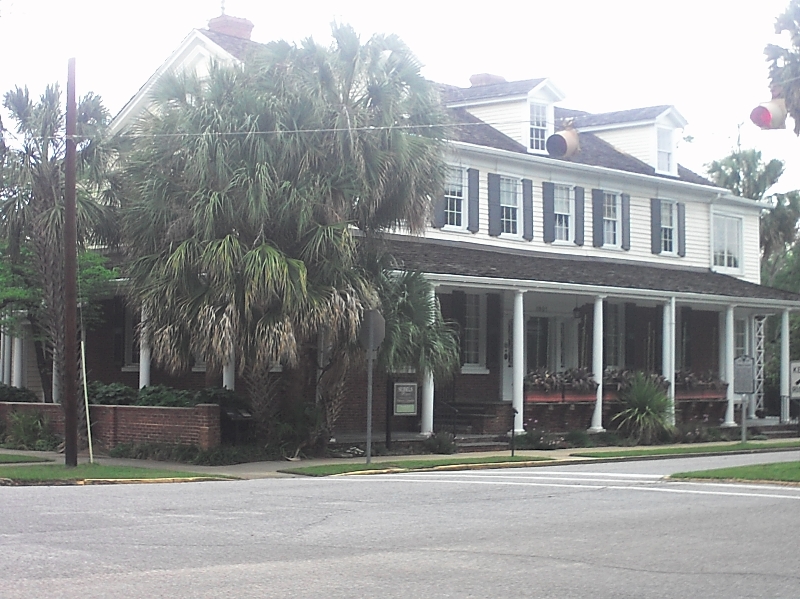
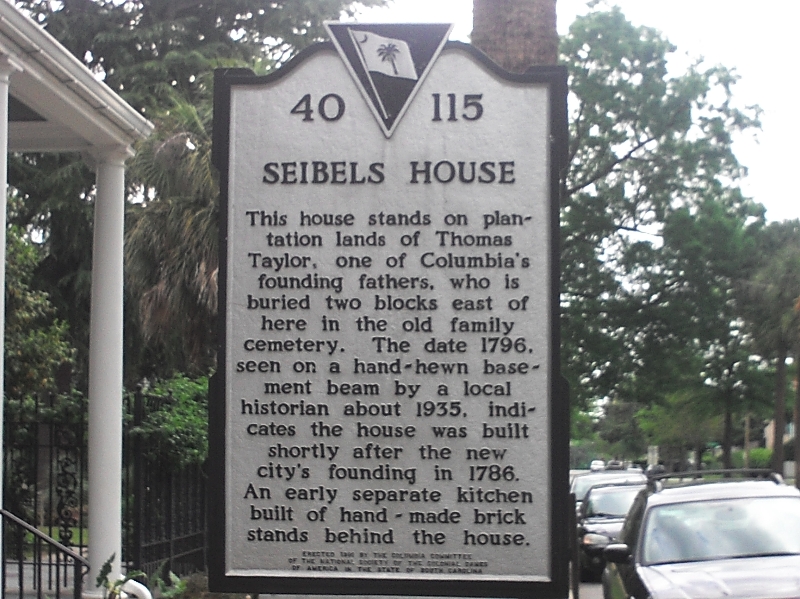
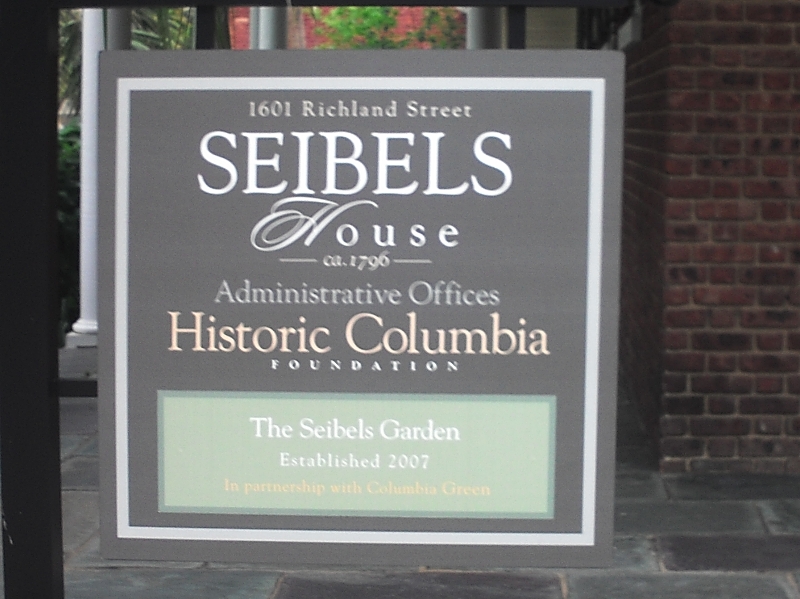

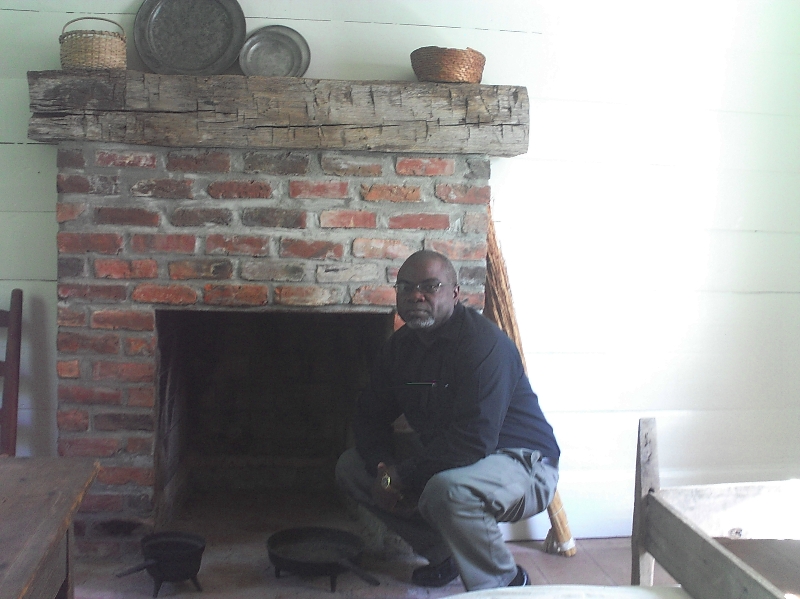
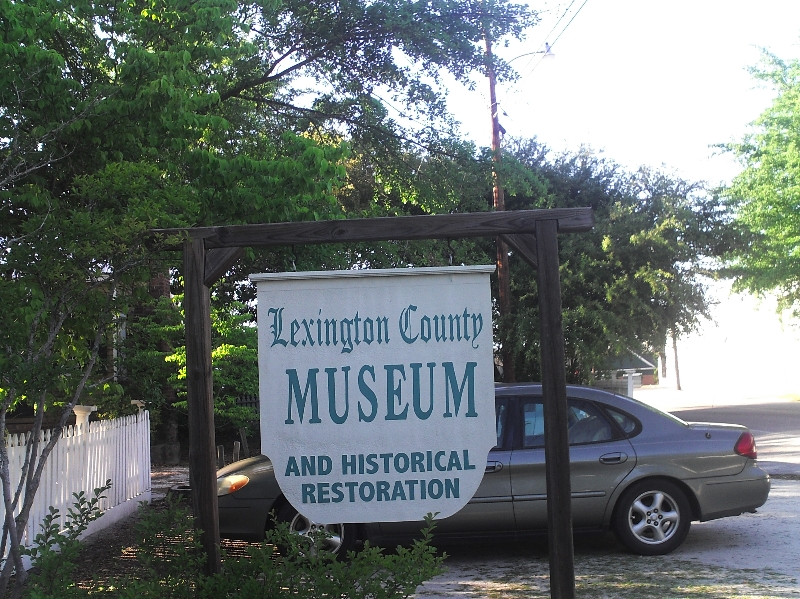
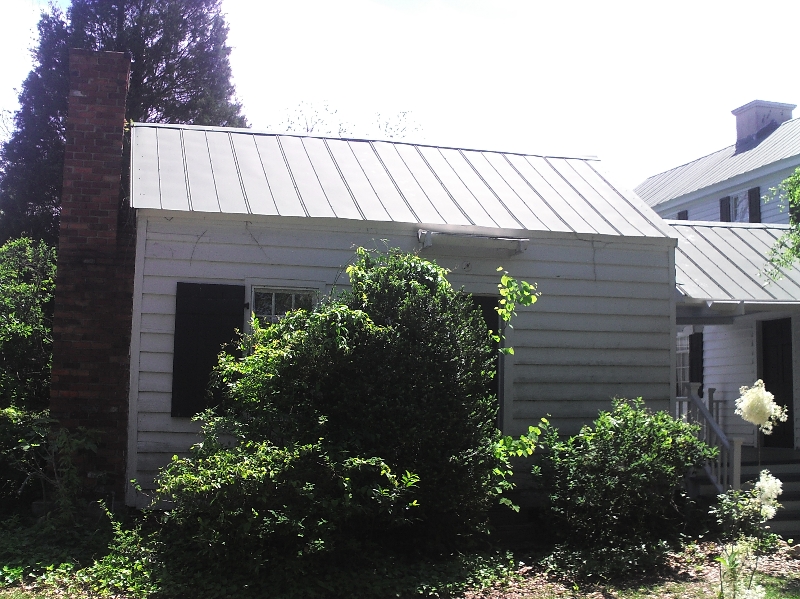
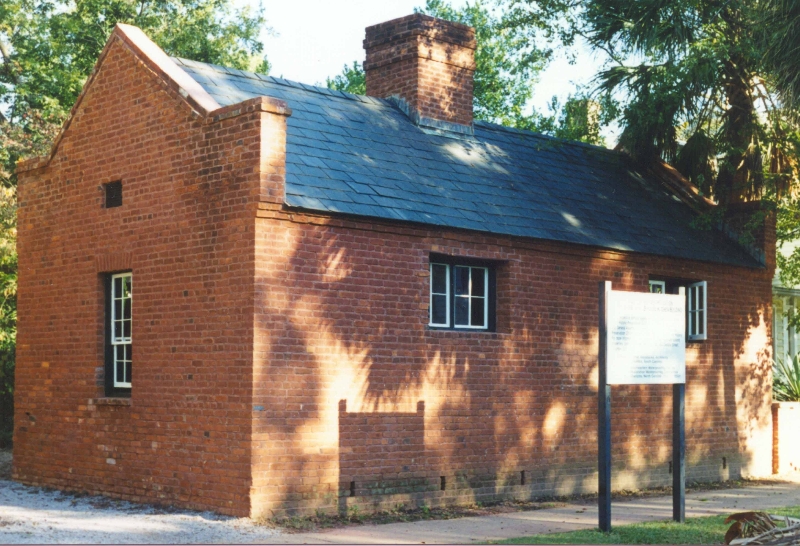
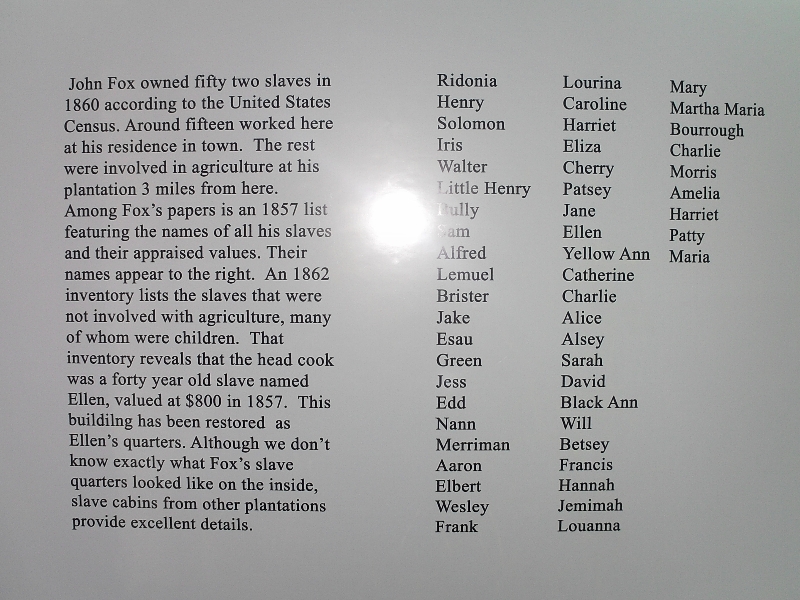







We absolutely love your blog and find nearly all of your post’s to be just what I’m looking for.
can you offer guest writers to write content in your case?
I wouldn’t mind writing a post or elaborating on a few of the subjects you write regarding here. Again, awesome web log!